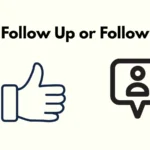Is it “litre” vs “liter”? This spelling dilemma often pops up in academic writing, product labelling, and everyday communication. Though both words refer to the same unit of volume in the metric system, their spelling varies based on regional language norms.
You’ll commonly see “litre” in British English and “liter” in American English, but knowing when to use which can make your writing look polished and appropriate for your audience.
Understanding the difference between British vs. American spelling, especially for measurements like litre/liter, is essential in global communication. Whether you’re writing a research paper, creating packaging content, or publishing online for an international audience, using the correct variant of English spelling boosts credibility.
Let’s explore the subtle yet important distinctions between litre and liter—and when to use each.
What Does “Litre” or “Liter” Mean?
A litre (or liter) is a unit of volume measurement used in the metric system. It equals:
- 1 litre = 1,000 milliliters (mL)
- 1 litre = 1 cubic decimeter (dm³)
- 1 litre ≈ 0.264 US gallons
- 1 litre ≈ 1.057 US quarts
It’s commonly used to measure liquids like water, milk, petrol, and beverages across the globe.
Here’s a quick conversion table for reference:
| Measurement | Equivalent in Litres | Equivalent in US Gallons |
| 1 milliliter (mL) | 0.001 litres | 0.00026 gallons |
| 500 mL (half litre) | 0.5 litres | 0.132 gallons |
| 1 litre | 1 litre | 0.264 gallons |
| 2 litres | 2 litres | 0.528 gallons |
| 5 litres | 5 litres | 1.32 gallons |
Whether you spell it litre or liter, the quantity stays the same.
Why Is There Confusion Between “Litre” and “Liter”?
The confusion boils down to regional spelling differences between British English and American English. Much like “colour” vs. “color” or “centre” vs. “center”, the two versions reflect different language traditions—not differences in meaning.
The metric system, originally developed in France in the 18th century, spread globally. As it did, English-speaking countries adopted their own spellings of metric terms. Hence, “litre” in the UK, and “liter” in the US.
But here’s the kicker: both are correct—in the right context.
British English: Use “Litre”
In countries that follow British English conventions, the correct spelling is litre. This includes:
- United Kingdom
- Canada
- Australia
- New Zealand
- India
- South Africa
- Ireland
Examples:
- “He drank two litres of water after the run.”
- “Petrol is sold by the litre in most of Europe.”
In fact, in these countries, using “liter” can look out of place or even incorrect in formal writing.
American English: Use “Liter”
In the United States and other regions influenced by American English, liter is the standard spelling. It’s used in schools, government documents, scientific research, and public signage.
Examples:
- “This bottle contains 1 liter of soda.”
- “Gasoline is sold by the gallon, not the liter, in the U.S.”
Fun fact: While the U.S. primarily uses the imperial system, the liter is still common in science, beverages, and health-related contexts.
What Style Guides Say About “Litre vs. Liter”
Different style guides and standards bodies recommend different spellings depending on the audience, discipline, and geographical region.
Common Style Guide Preferences:
| Style Guide | Preferred Spelling | Context |
| APA (US-based) | Liter | Psychology, social sciences |
| MLA | Liter | Humanities in the US |
| Chicago Manual of Style | Liter | Publishing, journalism |
| Oxford Style Guide | Litre | British publications |
| ISO (International) | Litre | Official metric documents |
| Canadian Press | Litre | Media in Canada |
| Australian Style Manual | Litre | Official Australian usage |
Tip: Always follow the style guide appropriate for your writing. For scientific journals, stick with SI standards. For marketing, match your audience.
When to Use Each in a Multinational or General Context
In global businesses, websites, and marketing, you might be reaching both American and British English readers.
Here’s how to handle it:
1. Know Your Audience
If your primary readers are in the US, use liter. If they’re international or British, use litre.
2. Pick One and Be Consistent
Switching between “liter” and “litre” in the same piece can look sloppy.
3. Use Regional Settings in Software
Tools like Microsoft Word, Google Docs, and Grammarly let you select English (US) or English (UK). This ensures spelling is automatically standardized.
4. Adapt Based on Content Type
- Scientific Reports: Follow the SI unit spelling—litre
- Marketing Copy (US market): Use liter
- eCommerce sites with international customers: Clarify with visuals or dual spellings (e.g., “1 litre (liter)”)
Practical Examples: Litre vs. Liter in Real Sentences
| Context | British English | American English |
| Cooking blog | “Add 1 litre of broth.” | “Add 1 liter of broth.” |
| Academic essay | “A litre of water weighs one kilogram.” | “A liter of water weighs one kilogram.” |
| Product label | “2 litres of orange juice” | “2 liters of orange juice” |
| Fuel measurement | “Petrol is sold by the litre.” | “Gas is measured in liters only in lab settings.” |
Origin and Etymology of “Litre” and “Liter”
The word litre comes from the French word “litre”, which itself traces back to the medieval Latin word “litra”, a term for a measure of weight.
When the metric system was first adopted in France in 1795, the litre was defined as the volume of a cube 10 cm on each side—or one cubic decimeter.
How “liter” came to be:
- Noah Webster, an American lexicographer and language reformer, promoted simplified spellings in the early 1800s.
- As part of his efforts (which also gave us “color” and “center”), “litre” was Americanized to “liter.”
Quote from Noah Webster’s 1828 Dictionary:
“Why multiply letters and syllables to the injury of ease and convenience?”
That’s why the U.S. adopted liter instead of litre.
Is There a Pronunciation Difference?
No. Despite the spelling difference, “litre” and “liter” are pronounced the same:
- IPA: /ˈliː.tər/
- Sound: LEE-tur
Accents may affect intonation slightly (e.g., British vs. American pronunciation), but there’s no difference in meaning or stress.
Common Mistakes and Misconceptions
Let’s clear up a few common myths:
“Litre” is more formal than “liter.”
False. Formality depends on context and audience—not spelling.
One is more correct than the other.
False. Both are correct regionally.
Canada uses “liter.”
False. Canada follows British spelling, so “litre” is used in all official documents.
Case Study: Coca-Cola Labeling Strategy
Coca-Cola is a global brand sold in over 200 countries, and they adapt their spelling to match the region:
- In the UK, Australia, and Canada, bottles are labeled as 2 Litre
- In the US, bottles read 2 Liter
Why it works:
- Builds local trust
- Enhances brand consistency
- Respects cultural and language norms
Summary: Key Takeaways for Using “Litre” or “Liter”
While “litre” and “liter” represent the same unit of volume, their usage hinges on regional spelling conventions. If you’re writing for a British, Canadian, or Australian audience, stick with “litre”. For a U.S.-based audience, “liter” is the correct choice. Neither is more “correct” than the other—it’s all about context, consistency, and clarity.
Whether you’re crafting academic content, global marketing material, or technical documentation, choosing the right spelling shows attention to detail and respect for your reader’s linguistic expectations. When in doubt, follow the relevant style guide or mirror your audience’s language standard. Mastering small distinctions like this can elevate your writing and make it feel more tailored, professional, and trustworthy.
Frequently Asked Questions (FAQs)
1. Which is correct: litre or liter?
Both are correct, but it depends on the region. “Litre” is used in British English, while “liter” is the American English spelling. The meaning and measurement are identical.
2. Is it liter or litre in Canada?
In Canada, the correct spelling is “litre”. Canada follows British English conventions, even though American spelling is commonly seen due to proximity to the U.S.
3. Is it 20 liter or litre?
It depends on where you’re writing. Use “20 litre” in British English regions like the UK, Canada, and Australia, and “20 liter” in the United States. The quantity is the same.
4. Is it liter or litre in India?
India uses “litre”, as it follows British English rules. This spelling appears in official documents, textbooks, and everyday writing throughout the country.
5. Is it center or centre?
“Centre” is the correct form in British English, including countries like the UK, Canada, and India. “Center” is the American English version used in the U.S.

Emma-Brooke is the passionate voice behind GrammerHome.com, where she simplifies English grammar for learners across the globe. With a deep love for language and years of experience in grammar instruction, Emma specializes in breaking down complex rules into clear, easy-to-understand tips.




